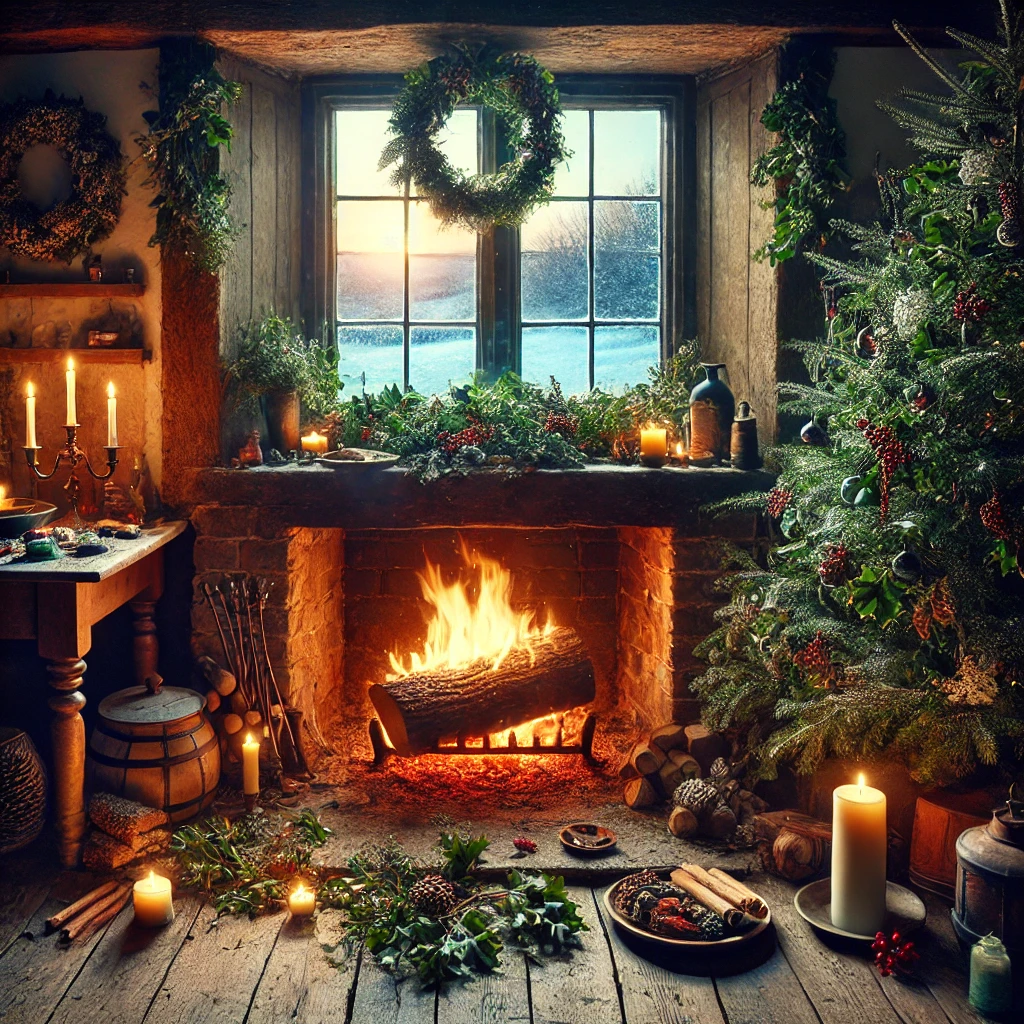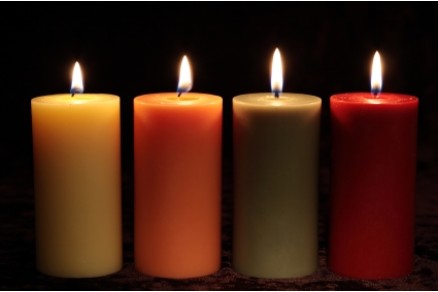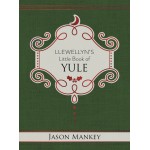Yule: The Winter Solstice Festival in Wiccan Practice
- 576
- 0
Yule, one of the eight Sabbats on the Wiccan Wheel of the Year, aligns with the winter solstice—the shortest day and longest night of the year. This sacred celebration is a time to honor the rebirth of the sun, the cycles of nature, and the balance between light and dark. Deeply rooted in ancient pagan traditions, Yule holds profound spiritual significance for those following Wicca, offering rituals, symbols, and practices that connect adherents to the rhythms of the earth.
The Winter Solstice and Its Spiritual Meaning
For Wiccans, the winter solstice is a time of renewal and transformation. Astronomically, it marks the moment when the sun reaches its southernmost point, resulting in the least daylight. Spiritually, it signifies the rebirth of the sun—a return of light and hope during the darkest part of the year. This turning point in the Wheel of the Year is celebrated as a moment of gratitude, reflection, and the promise of growth.
The solstice symbolizes the eternal cycle of death and rebirth, echoing the mythology of the God and Goddess. The God, having been born anew at Samhain, reaches infancy at Yule, while the Goddess rests after the labor of bringing him into the world. Together, they represent the harmonious forces of creation and the cyclical nature of life.
The Pagan Roots of Yule
 Yule originates from ancient pagan traditions, particularly those of the Germanic peoples. The name “Yule” derives from Old Norse “jól” and Old English “geól,” terms linked to midwinter festivities. For Wiccans, these roots are a source of inspiration, grounding modern practices in the rich spiritual heritage of pre-Christian Europe.
Yule originates from ancient pagan traditions, particularly those of the Germanic peoples. The name “Yule” derives from Old Norse “jól” and Old English “geól,” terms linked to midwinter festivities. For Wiccans, these roots are a source of inspiration, grounding modern practices in the rich spiritual heritage of pre-Christian Europe.
Central to Yule celebrations is the Yule log, a powerful symbol of the returning sun. Traditionally, a log was burned in the hearth, its flames representing the sun’s warmth and light. Today, Wiccans may adapt this practice by lighting candles or crafting decorative Yule logs for their altars. The ash or remnants of the log can be kept as a talisman for protection and blessings in the coming year.
Evergreens such as holly, ivy, and mistletoe are revered during Yule for their enduring vitality in the face of winter’s chill. These plants symbolize eternal life, resilience, and the interconnectedness of all living things. Many Wiccans incorporate them into their altar decorations or use them in rituals to honor the spirits of nature.
Wicca Rituals and Practices for Yule
Wiccan Yule rituals are deeply personal and can vary among covens and solitary practitioners. Common themes include honoring the rebirth of the sun, expressing gratitude, and setting intentions for the year ahead. Light and fire play a central role in many ceremonies, reflecting the solstice’s focus on the return of light.
One popular practice is the lighting of candles in correspondence with the lengthening days. Each candle represents a prayer, intention, or blessing, and their collective glow symbolizes the growing strength of the sun. Meditation or visualization exercises during this time often center on themes of renewal, letting go of past burdens, and welcoming new beginnings.
Feasting and community are also integral to Wiccan Yule. Seasonal foods like nuts, fruits, and spiced cider are shared, celebrating the abundance of the earth even in winter’s quiet. Offerings may be made to the God and Goddess, as well as to the spirits of nature, to give thanks and ensure blessings for the coming seasons.
Wassailing, or the singing of blessings, may also be practiced. Wiccans often adapt this tradition to honor trees, orchards, or sacred spaces, offering toasts of cider or mead to promote fertility and harmony in the natural world.
Yule in Wiccan Mythology
In Wiccan mythology, Yule marks the God’s birth or rebirth, a reflection of the sun’s renewal. The Goddess, often depicted as the Crone at Samhain, transitions to her role as the Mother, embodying the earth’s nurturing energies. Together, their story weaves the sacred balance of life and light, inspiring Wiccans to attune themselves to the cycles of nature.
This mythological framework provides a spiritual narrative for Yule rituals and meditations. By connecting to these archetypal forces, Wiccans align their energy with the turning of the Wheel of the Year, fostering a sense of harmony and purpose.
Contemporary Wiccan Celebrations of Yule
 Today, Yule is celebrated in diverse ways, reflecting the creativity and individuality of Wiccan practitioners. Solitary witches may conduct private rituals, lighting candles and meditating on personal growth, while covens often gather for communal ceremonies and feasts.
Today, Yule is celebrated in diverse ways, reflecting the creativity and individuality of Wiccan practitioners. Solitary witches may conduct private rituals, lighting candles and meditating on personal growth, while covens often gather for communal ceremonies and feasts.
Altars are commonly adorned with seasonal symbols: evergreen branches, pinecones, sun motifs, and crystals like garnet or bloodstone. These elements are chosen to invoke protection, strength, and the vitality of the returning sun. Ritual tools such as athames and chalices may also be incorporated, symbolizing the balance of masculine and feminine energies.
Nature-based activities, such as solstice walks or outdoor meditations, are particularly meaningful for Wiccans. These practices deepen the connection to the earth and its cycles, allowing practitioners to honor the natural world as a living, sacred entity.
Acts of generosity and kindness are encouraged during Yule, reflecting the spirit of the season. Wiccans may engage in community service, donate to those in need, or perform rituals of healing and blessing for the wider world.
The enduring beauty of Yule within Wicca lies in its ability to blend ancient traditions with modern spiritual practices. By celebrating the return of the light, Wiccans honor the sacred dance of life, death, and rebirth, embracing the mystery and magic of the winter solstice.
Related Posts
Celebrating the Autumn Harvests
- 2561
- 0
Just as Native Americans and British colonists joined together in a feast of thanks to the deities who sustained their lives, we can also share this universal theme of the Harvest Home with others. We..
Embracing Magic: Living an Enchanted Life Every Day
- 2789
- 0
Discover the magic of living an enchanted life, where everyday moments are infused with wonder and joy. Unveil the secrets to embracing enchantment and creating a life filled with magic and possibilit..



















